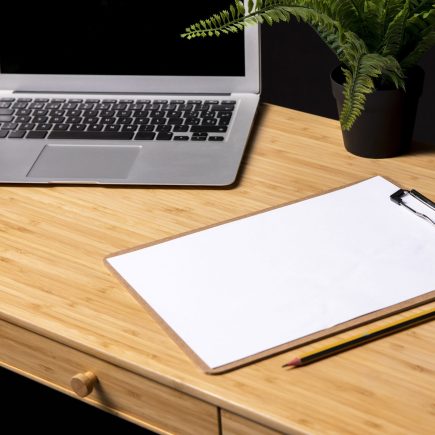Before diving into the specific materials available, it’s essential to understand the primary factors that should guide your decision:

A raised garden bed liner is an investment, and you’ll want one that can endure through the seasons. Factors such as moisture, sunlight, and temperature changes can wear down some materials over time. A liner’s durability determines how often you’ll need to replace it and whether it will continue to perform well in the long run.
Popular Raised Bed Liner Materials
Now that we know what to look for in a raised bed liner, let’s explore some of the most popular materials used in raised bed setups. Each material has unique characteristics, and the right one for your garden depends on your specific needs.
1. Plastic Liners

Plastic liners are a common choice for raised garden beds due to their affordability and ease of installation. They are moisture-resistant, durable, and offer a simple solution for protecting the bed from soil erosion and preventing waterlogging. However, there are a few concerns when it comes to plastic liners:
Pros:
- Long-lasting (5-10 years).
- Easy to install and cut to size.
- Affordable and widely available.
Cons:
- Can leach chemicals into the soil over time.
- Poor drainage, unless specifically designed for gardening use.
- Not eco-friendly (can take a long time to degrade).
Tip: If you go with a plastic liner, make sure to choose one specifically designed for garden use to avoid chemicals leaching into your soil. You can pair it with drainage holes to help water flow through.
2. Landscape Fabric

Landscape fabric is a popular alternative to plastic. It’s made from synthetic fibers that are breathable, lightweight, and capable of preventing weeds from growing through your soil while still allowing for water drainage.
Pros:
- Breathable, which improves root health.
- Effective at preventing weed growth.
- More eco-friendly than plastic.
Cons:
- Can degrade over time (typically 3-5 years).
- Not as durable as plastic or metal mesh.
- May need to be replaced periodically.
Tip: To maximize the life of your landscape fabric, use it in combination with another material like cardboard or mesh. This will provide better pest protection and enhance water retention.

Recommended Product: If you’re aiming for an easy-to-assemble, high-quality solution, the Outsunny 6 Pocket Raised Garden Bed features non-woven fabric liners that are perfect for creating the ideal growing environment while keeping the soil intact.
3. Cardboard and Newspaper
For gardeners on a budget, cardboard and newspaper are great options. These materials are biodegradable and can easily be sourced for free. However, they are best suited as temporary solutions rather than long-term fixes.
Pros:
- Extremely affordable (often free).
- Biodegradable and eco-friendly.
- Easy to use and install.
Cons:
- Only a short-term solution (needs replacement every year).
- Provides minimal protection against pests.
- Can degrade quickly, especially in wet conditions.
Tip: Use cardboard and newspaper as a first layer in combination with more durable materials like landscape fabric or mesh. This combination helps create a temporary barrier that reduces the growth of weeds.

Recommended Product: For a more durable solution, the Outsunny 3 Tier Raised Garden Bed offers a solid frame made of wood and features drainage holes at the bottom to ensure proper water flow. It’s a great option if you want long-lasting protection without sacrificing aesthetics.
4. Metal Mesh (Hardware Cloth & Gopher Mesh)

Metal mesh is an excellent option if you’re worried about pests like gophers or voles. It’s also effective for allowing drainage while providing a physical barrier against pests.
Pros:
- Prevents pests like gophers from burrowing into your soil.
- Excellent drainage and root health.
- Long-lasting (10+ years).
Cons:
- Higher upfront cost.
- More difficult to install compared to other materials.
- Can be harder to cut to size.
Tip: If you live in an area with a lot of pests, a metal mesh liner is worth considering. Combining it with a wood or plastic frame can create a highly effective, long-lasting raised bed system.

Recommended Product: The Galvanized Raised Garden Bed, Elevated Large Metal Planter Box is an ideal option for gardeners looking to invest in long-term durability. Its steel construction and reinforced rods offer excellent protection against pests while allowing water to drain properly.
5. Burlap Sacks
Burlap is a simple and eco-friendly material that can be used as a liner. It’s biodegradable, breathable, and easy to handle. However, burlap will degrade quickly, so it’s not a long-term solution.
Pros:
- Biodegradable and eco-friendly.
- Provides excellent drainage.
- Easy to use and install.
Cons:
- Needs frequent replacement (every 1-2 years).
- Not as durable as plastic or metal mesh.
Tip: Use burlap sacks for a quick and simple setup, but be prepared to replace them periodically.
Comparing Costs and Benefits of Liner Materials
When deciding on the best material for lining your raised garden bed, cost plays a significant role. Here’s a breakdown of the average costs and benefits of each material:
| Material | Cost | Durability | Drainage | Eco-Friendliness |
| Plastic Liners | Low | 5-10 years | Poor (unless designed) | Low |
| Landscape Fabric | Medium | 3-5 years | Good | Moderate |
| Cardboard/Newspaper | Very Low | 1 year | Poor | High |
| Metal Mesh | High | 10+ years | Excellent | Moderate |
| Burlap | Low | 1-2 years | Good | High |
Customizing Your Raised Bed Liner for Your Needs

Choosing the best liner material depends on your garden’s climate, your aesthetic preferences, and whether you want to address specific challenges such as pests or poor soil drainage.
Climate-Specific Tips:
- Cold Climates: Consider using burlap sacks or landscape fabric for insulation and protection against frost.
- Hot Climates: Metal mesh and landscape fabric are excellent for retaining moisture while preventing overheating.
- Pest-Prone Areas: Metal mesh is a must if you have issues with rodents or burrowing animals.
Frequently Asked Questions (FAQs)
1. How often do I need to replace the liner in my raised garden bed?
The lifespan of your liner depends on the material. Plastic liners can last 5-10 years, while landscape fabric typically lasts 3-5 years. Burlap sacks will need to be replaced every year.
2. Can I use plastic liners in my raised bed?
Yes, but make sure you choose a plastic liner designed for gardening. Plastic can cause drainage issues and potentially leach chemicals, so it’s best to ensure proper drainage and avoid contact with edible plants.
3. Can I use landscape fabric to prevent weeds in my raised bed?
Yes, landscape fabric is effective at preventing weeds while allowing water to drain freely. However, it may degrade over time, so be prepared to replace it in a few years.
4. What’s the best material for water drainage in my raised bed?
Metal mesh and landscape fabric are both excellent at allowing water to drain freely while protecting against soil erosion. These materials ensure that your plants have access to the right amount of water.






















